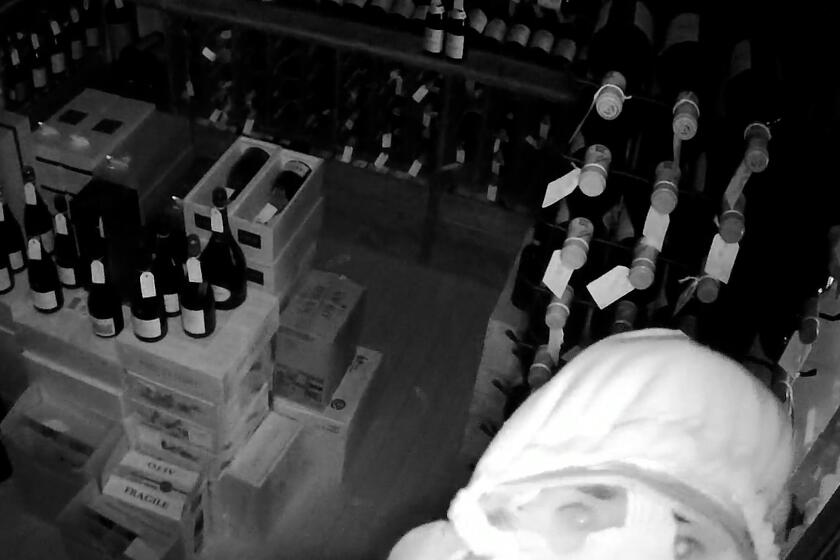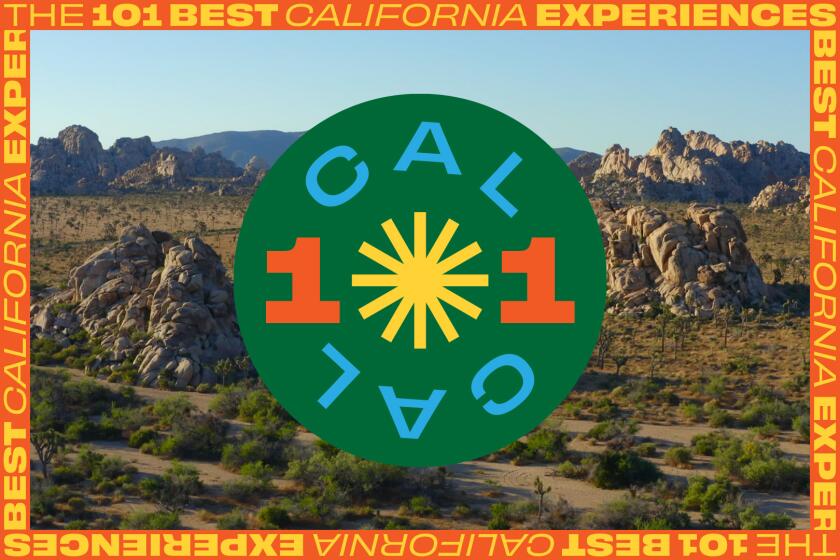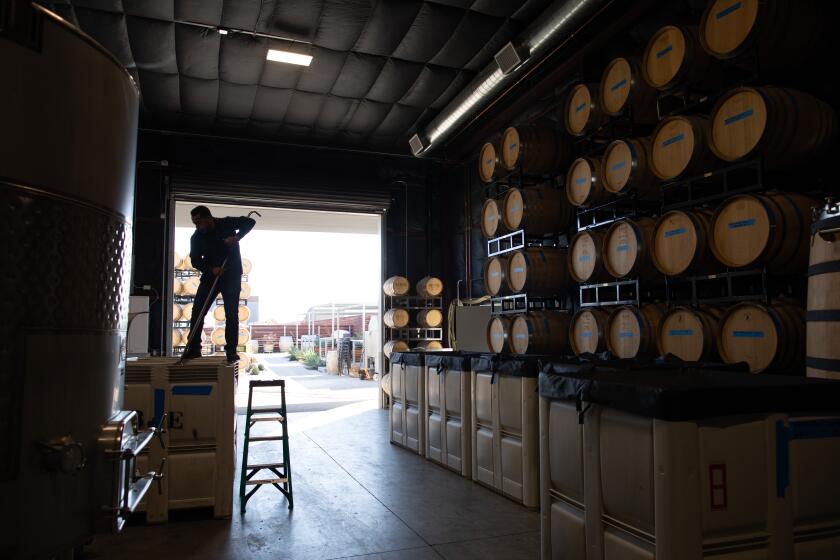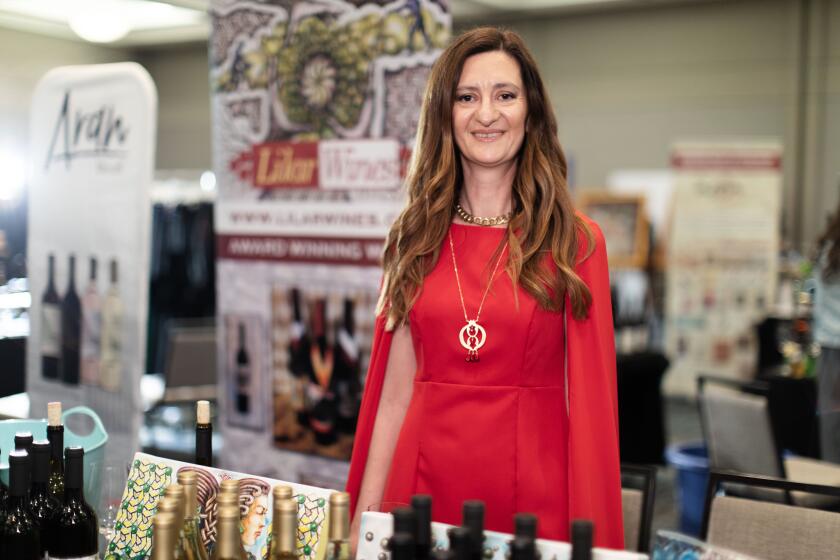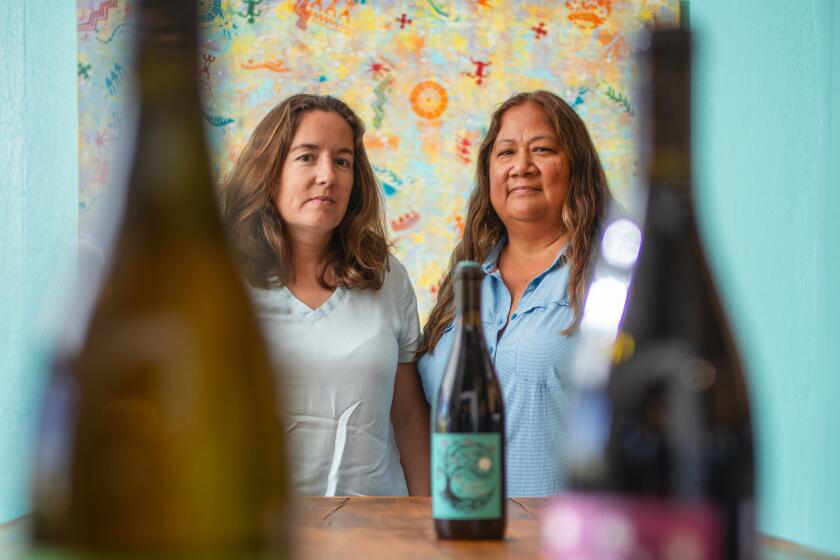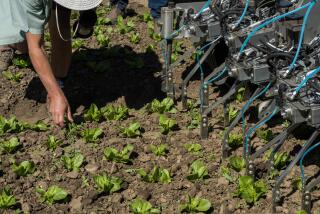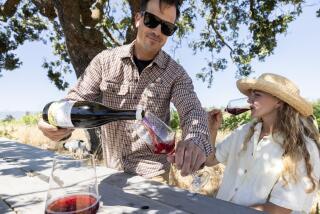NASA technology can spot wine grape disease from the sky. The world’s food supply could benefit
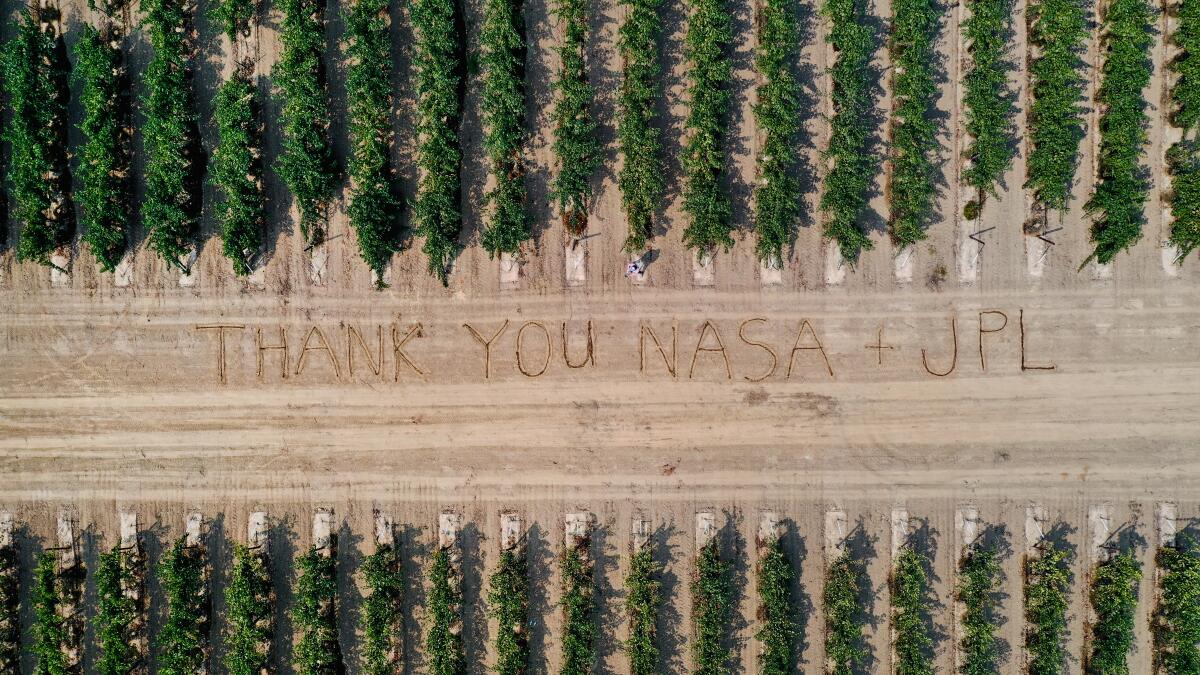
- Share via
Cutting-edge NASA imaging technology can detect early signs of a plant virus that, if unaddressed, often proves devastating for wineries and grape growers, new research has found.
While the breakthrough is good news for the wine and grape industry, which loses billions of dollars a year to the crop-ruining disease, it could eventually help global agriculture as a whole.
Using intricate infrared images captured by airplane over California’s Central Valley, researchers were able to distinguish Cabernet Sauvignon grape vines that were infected but not showing symptoms — before the point at which growers can spot the disease and respond.
The technology, coupled with machine learning and on-the-ground analysis, successfully identified infected plants with almost 90% accuracy in some cases, according to two new research papers.
“This is the first time we’ve ever shown the ability to do viral disease detection on the airborne scale,” said Katie Gold, an assistant professor of grape pathology at Cornell University and a lead researcher on the project. “The next step is scaling to space.”
The theft of hundreds of bottles of wine from an L.A. shop — including about 75 priced upwards of $1,000 — is the latest of several high-profile crimes targeting the industry.
As NASA’s Jet Propulsion Laboratory is working on sending its airborne imaging instrument — a spectrometer known as AVIRIS-NG — into space, the research team is hopeful more routine aerial images and data from the launched machine could be used to more widely monitor crops.
“The ultimate vision is to be able to do this from space — and not just for grapes and not just this one disease and not just a few places in California, but to be able to do this for farmers all over the world, for many different crops and many different diseases and pests,” said Ryan Pavlick, a research technologist at JPL who worked on the grape project.
The implications of such a venture — if successful on a global scale — could “benefit the whole food system,” Gold said.
“If we can detect disease before it’s really spiraling out of control at its early stages [and] make a targeted intervention, we can then more strategically use our resources, reduce the amount of chemistry we’re putting into the environment, as well as make overall operations more sustainable, both from an environmental and financial standpoint,” Gold said.
Less disease and crop loss would mean more limited pesticide use and land use for agriculture — better for human and Earth health — as well as financial benefits, she said.
In this drought-paused, restriction-lifted, spring-awakening moment, our state is ready for a good head-to-toe inspection. Come explore with us.
But that’s still a far-off vision, Pavlick said, with much more research necessary before the spectrometer is set to head up to space at the end of this decade. This latest study, focused on vineyards and the grapevine leafroll virus 3, or GLRaV-3, is a promising example of how this powerful technology can be leveraged, he said.
The leafroll virus is primarily spread across vineyards by the endemic mealybug, and once the disease takes hold the only treatment is removal — costing the U.S. wine and grape industry some $3 billion in damage and losses annually, researchers said.
Right now, the virus is detected by growers predominately through laborious vine-by-vine analysis and expensive molecular testing, which usually provides results too late, once the virus has already ruined crops and spread.
There are also some companies, such as VineView in California, which provide disease mapping of crops using aerial imaging based on previous research, which Gold said helped lay the foundation for their higher-resolution project that was able to spot asymptomatic disease.
“This issue is so financially devastating,” said Stephanie Bolton, the research and education director at the Lodi Winegrape Commission, a winegrower advocacy group that assisted in the research. “Once it’s noticeable, it can be pretty widespread throughout a vineyard,” downgrading grapes’ quality and leaving vines completely unusable.
The stories of Latinos — particularly Mexican-Americans — in the wine industry were often relegated to those who prune or graft the vines or work in the cellars. But that’s changing as Latino vintners grow in number and influence.
That’s because the leafroll virus has a latent period of one year, Gold said.
“By the time a grapevine is showing symptoms, it’s already been infected for a year and it’s been spreading the virus to all of its neighbors,” Gold said.
So finding a way to identify early infection was key, she said, a challenge that led to the 2020 “wine tour” over Lodi vineyards, a collaboration between JPL and Cornell University.
Researchers flew the AVIRIS-NG, or the next-generation Airborne Visible/InfraRed Imaging Spectrometer developed at JPL, over about 11,000 acres of vineyards near Lodi. The spectrometer captures data from hundreds of channels of light, including those far beyond the visible spectrum — “down into the ultraviolet and well above the infrared,” Pavlick said.
As the machine flies over an area, it creates a map of squiggly lines, full of information on how the light was reflected that can be useful for applications such as detecting methane leaks, measuring the size of a snowflake or understanding the biochemistry of a vegetative canopy.
“From the shape of each of those squiggly lines, we can infer all kinds of things about the earth,” Pavlick said.
It’s no surprise that Los Angeles, home to a thriving Armenian community, proves one of the best places to try Old World Armenian wines, which use traditional methods to create robust reds and effervescent orange and natural wines.
Using that data, the research team developed and trained computer models to distinguish the infection, while vineyard collaborators analyzed grapevines for symptoms and provided samples — scouting over 300 acres of vines for two years.
“This work would not have been possible without their commitment,” Gold said.
Bolton, of the Lodi Winegrape Commission, said it was work that local growers in Lodi were excited to be a part of.
“The growers here are really committed to learning and solving their problems and teamwork,” Bolton said of the community of about 750 growers, many of them farming families. “We were pretty excited with the potential.”
The research’s findings focused only on red grapes, but Gold is hopeful the asymptomatic detection could help spot the virus in white grape varieties, which are also affected by the disease but can be harder to spot symptoms of the leafroll virus on.
“We’re really at a renaissance in the use of remote sensing in plant pathology,” Gold said. “We’re finally at this point where we can do what we dreamed of, which is stopping disease before it spirals into an epidemic, to help growers make more sustainable choices.”
At Camins 2 Dreams, a Chumash Catalunyan couple make ‘underrepresented wine by underrepresented people’ in the Santa Rita Hills.
Though the study was successful, Gold said it’s not logistically or financially feasible to expand the project with further airplane flights over the thousands of vineyards in California — and all over the world — which is why their eyes are on space.
“Space offers the opportunity to monitor at the scale at which production occurs,” Gold said. “It’s not something just localized to one grower, because vineyards border each other … so we need to manage it at a regional community scale. And space is what offers that opportunity because it just covers a much vaster area.”
More to Read
Sign up for Essential California
The most important California stories and recommendations in your inbox every morning.
You may occasionally receive promotional content from the Los Angeles Times.
